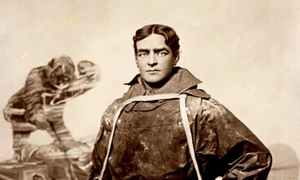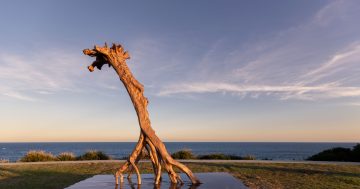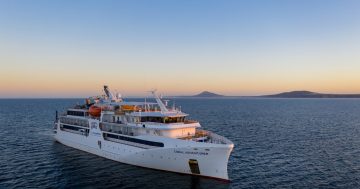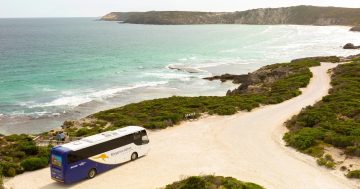Jonathan Amos* reviews an online exhibition covering the final voyage of the famed Antarctic explorer, Ernest Shackleton.
 It has been 100 years since Antarctic explorer, Ernest Shackleton set out on his final expedition.
It has been 100 years since Antarctic explorer, Ernest Shackleton set out on his final expedition.
Leaving London through Tower Bridge, and hailed by a large crowd, his intention was to map still uncharted coastal regions of the White Continent.
He never managed it, dying of a heart attack before reaching the polar south at the island of South Georgia.
To mark Shackleton’s passing, the South Georgia Heritage Trust (SGHT) has mounted a special exhibition.
It tells the story of that final expedition, which continued without him, and includes some fascinating archive material recalling his death and burial at the British Overseas Territory.
Some of the artefacts have not been seen publicly before, or at least haven’t been seen in their proper context. Some objects have been loaned from other museums.
For now, the exhibition is online only, but eventually the physical items will be moved to the museum at Grytviken on South Georgia, which attracts a lot of tourists who are drawn to the island’s spectacular scenery and wildlife.
The SGHT’s Museum Curator, Jayne Pierce says the good thing about the exhibition is that it is online so anyone can see it.
“Shackleton has a lot of super fans who never would be able to get to South Georgia, and this way they can see what we’ve put together,” Ms Pierce said.
The 17 September, 1921, departure from St Katherine Dock was the beginning of what turned out to be — literally — Shackleton’s “last quest”.
Quest was the name of the ship in which his team would travel south. A Norwegian sealer, the vessel was converted for the purpose and was fitted with a crow’s nest to aid navigation through sea-ice and to look out for hazards such as big icebergs.
That crow’s nest, not much more than a simple barrel, still exists and has been included in the exhibition. It’s been scanned so that visitors can turn it around online.
“When we started looking at what to do to mark Shackleton’s death, we thought we should expand the exhibition to also tell the story of the expedition, even though it wasn’t that remarkable and he himself never actually carried it through,” Ms Pierce said.
“The Quest expedition is still important because it represented his last big push in life. He was desperate to go, and it was almost as if he knew his time was limited.”
The expedition (more properly called the Shackleton-Rowett Expedition) was the explorer’s fourth Antarctic venture. He’s most famous, of course, for his third, the ill-fated Imperial Trans-Antarctic Expedition, 1914-17.
Trapped in sea-ice for over 10 months, his Endurance ship drifted around the Weddell Sea until ultimately it was crushed by the floes and dropped to the deep.
How Shackleton and his men then made their escape on foot and in lifeboats is the stuff of legend.
Shackleton fans now visit South Georgia to retrace the final stages of the escape which saw him walk over the island’s mountains to raise the alarm at the Stromness whaling station just along the coast from Grytviken.
“His ties to South Georgia are therefore deep. After he died they tried to send his remains home but when they reached Montevideo, word reached his wife and she said he should be buried in South Georgia because that’s where his true soul was.”
This turn of events was certainly unexpected for the crew of the Quest. After the death of ‘The Boss’, they had continued on to Antarctica to conduct the planned mapping work, and so were surprised to find his grave at South Georgia when they came back through.
Asked to explain the enduring appeal of Shackleton, Ms Pierce says it has something to do with the romance of the so-called ‘heroic age’ of Antarctic exploration.
“I guess today technology makes everything so easy. We can go to space, we can go to the bottom of the ocean, we can go to the South Pole, but for Shackleton, these were all unknowns,” she said.
“They didn’t have the technologies, and so for lots of people there’s this romance to what Shackleton did and to the idea of the wilderness that doesn’t really exist anymore.”
Shackleton will be in the news early next year when another mission is mounted to try to find and photograph the wreck of the Endurance on the floor of the Weddell Sea.
* Jonathan Amos is the British Broadcasting Corporation’s Science Correspondent.
This article first appeared at BBC Online.
The online exhibition Schackleton’s Last Quest can be accessed at this PS News link.











